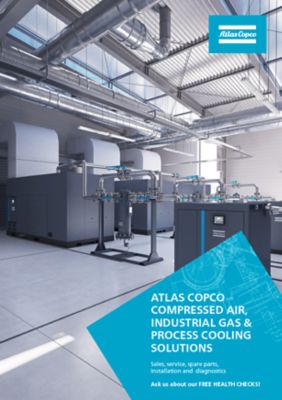Compressed air quality testing services
Why air quality is important
Many businesses that use compressed air are subject to air quality standards. Depending on the application, these can be more or less stringent. For example, that air has to be very pure whenever it comes into contact with products that are later consumed by end customers, such as food, beverages or pharmaceuticals.
Knowing these air quality standards and complying with them is not just one of the core responsibilities of any business that works with compressed air, it also makes fiscal sense.
On the one hand, if the air quality does not meet the required thresholds, then this can have costly consequences. Too much moisture, for example, can lead to corrosion that harms your equipment and causes plant shutdowns. It can also result in the growth of microorganisms, which, just like oil in compressed air, can spoil your end products, harm your consumers and lead to expensive product recalls.
On the other hand, needlessly treating the air too much can also be bad for business. That’s because clean air has its costs – both in terms of the equipment you need and the energy you consume. So how do you strike the proper balance?
Determining your compressed air quality standard
The quality of the air used for many compressed air applications matters greatly. It not only protects the compressed air system and any downstream equipment but also the end products that the air comes into contact with.
There are no regulations or binding guidelines that specify which level of purity is needed for which type of application. There are some, non-binding guidelines, but in the end, it is the responsibility of the application owner to perform a hazard analysis and define the required compressed air purity based on that.
The ISO 8573-1 standard is generally accepted in the industry. It defines purity classes for three main types of contaminants: particles, moisture, and oil (volatile organic compounds) and thereby provides a consistent definition for the different compressed air quality classes.
If, for example, the air has to achieve Class 1 quality in terms of particulates, then it may not contain more than 20,000 parts sized 0.1 to 0.5 micron, 400 parts sized 0.5 to 1.0 micron, or 10 parts from 1 to 5 micron per cubic meter of air.
Once the application owner has defined the required compressed air quality class, they are immediately faced with a new challenge: how to ensure compliance with the required air quality (since non-compliance can have costly and painful consequences).
It’s not as though you can measure and count all of the particles under a microscope in the aforementioned example.
And ensuring compliance with the required compressed air quality is not only important at the time of commissioning, or following a maintenance operation. It may very well be that class 0 or 1 is reached in a new installation, or just after the replacement of filters. But filters become less effective over time, and some problems in the installation might lead to deterioration of air quality over time.
That is why it is absolutely necessary to follow up on the air quality over time. Depending on the assessed risk (in the hazard analysis), the air quality can be checked either periodically (air quality audits) or continuously. It goes without saying that the higher the assessed risk, the more it makes sense to choose continuous monitoring.
Otherwise, despite your best efforts, you could find yourself in the unpleasant situation of not complying with the required air quality for your application. This could mean production lines that have to stand still, products that have to be scrapped and even product recalls or liability claims from customers.
How to comply with regulations using compressed air quality testing services
It all starts with analyzing your current system to identify optimization potentials. For example, maybe your compressor is set up in very warm, humid or dusty ambient conditions. That results in unnecessary contaminants finding their way into your air that then have to be filtered out again later in the process.
A complete audit of your compressed air system not only helps you determine which air quality you need and how to best comply with applicable standards, but it also increases the overall reliability and efficiency of your system and therefore lowers your costs.
It is important to note that this should not be a one-time process. Monitoring and regularly analyzing your system and its performance should be part of your routine and it usually leads to savings in the long run.

